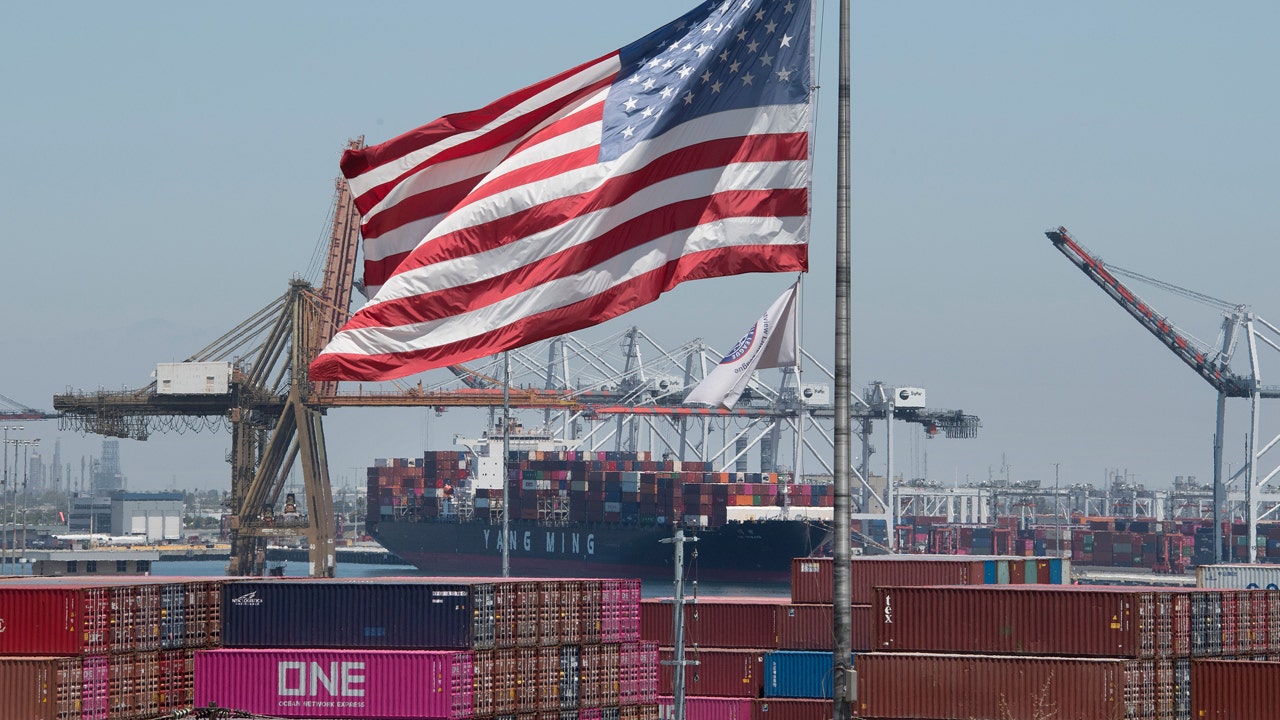How will tariffs affect Americans?
Jason Moser from The Motley Fool discusses how new tariffs on imports from Canada, China and Mexico will affect Americans.
WASHINGTON – President Donald Trump has said that he will delay tariffs on Mexican imports for at least a month as the country south of the U.S. has said they will reinforce the border with 10,000 members of the National Guard immediately.
Trump announced last week that he would be imposing 25% tariffs on goods imported from Canada and Mexico, and a 10% tariff on all imports from China.
The tariffs were framed as a response to illegal immigration and fentanyl-related concerns but the Trump administration has said it will also apply to oil — a move critics say could cause gas prices to shoot up in excess of $0.20 a gallon, FOX Business reports.
RELATED: How will tariffs affect grocery prices, gas prices, the stock market and more
What is a tariff?
The Basics:
Tariffs are taxes imposed on imported goods that are paid by the importer. The purpose of a tariff is to raise the price of imported goods and services to discourage consumption and get people to purchase more local products to stimulate the nation’s economy.
The idea is to encourage more local production so that imported goods can be replaced by domestic products, raising revenue for the government.
According to a report featured in the Journal of Economic Perspectives, it is common for U.S. presidents to introduce protectionist measures — like heavy tariffs — early on in their terms.
In 2018, Trump imposed tariffs on $283 billion of US imports in 2018, with rates ranging between 10% and 50%. In response, several countries including China, Russia, Canada, Mexico and the EU all filed cases against the U.S. with the World Trade Organization. Many of those countries also retaliated with tariffs of their own.
Trade war concerns
What’s next:
On Sunday, Canada and Mexico ordered retaliatory tariffs on American goods in response to sweeping tariffs imposed by Trump, and businesses and consumers in both countries questioned how the new trade war might affect them.
Canada initially ordered tariffs of 25% on American imports starting Tuesday, including beverages, cosmetics and paper products worth 30 billion Canadian dollars ($20 billion). A second list of goods was to be released soon, including passenger vehicles, trucks, steel and aluminum products, certain fruits and vegetables, beef, pork, dairy products, aerospace products and more. Those goods were estimated to be worth 125 billion Canadian dollars ($85 billion).
Trump and Mexico’s President Claudia Sheinbaum Pardo then announced Monday that there would be a month-long pause on tariffs applied to Mexican imports in exchange for border enforcement, with10,000 members of Mexico’s National Guard being deployed to reinforce efforts at the nation’s northern border.
“Mexico will reinforce the northern border with 10,000 members of the National Guard immediately, to stop drug trafficking from Mexico to the United States, in particular fentanyl,” Sheinbaum posted on X. “The United States commits to work to stop the trafficking of high powered weapons to Mexico.”
Canada is the largest export market for 36 states, and Mexico is the largest trading partner of the U.S.
The Ministry of Commerce in China said it would file a lawsuit with the World Trade Organization for the “wrongful practices of the U.S.” and take measures to safeguard its rights and interests.
Concerns over the tariffs impacted U.S. stocks Monday as financial markets worldwide dropped on fears of a potential trade war.
The S&P 500 fell 1.4% in early trading, mirroring losses in stock markets across Asia and Europe. The Dow Jones Industrial Average dropped 435 points, or 1%, by 9:35 a.m. Eastern time, while the Nasdaq composite declined by 1.8%.
The market downturn affected a wide range of assets, from bitcoin to the Mexican peso, not just U.S. companies expected to be hit hardest by Trump’s tariffs. On Wall Street, Big Tech and other companies vulnerable to higher interest rates experienced some of the sharpest losses.
Trump has promised more import taxes to come.
How will tariffs affect grocery prices?
Big picture view:
There is growing concern that Trump’s tariffs will lead to higher prices for groceries, electronics, and various other household expenses. This could put upward pressure on the U.S. inflation rate, which has been gradually slowing since its peak three summers ago.
Jason Moser from The Motley Fool says the risk is in the longer Trump’s tariffs go on. “Mexico actually provides about half of the U.S. fresh produce imports annually. More than 80% of our avocados,” he said. “You might want to stock up on some tequila. Certainly, consumer electronics, bigger ticket items like cars. I think that’s one to think about too given how connected that supply chain is between Mexico, Canada and the U.S.” Moser told FOX 5 on Monday. “I think the risk is on the longer this goes on, then we start seeing those price increases, perhaps we see supply chain interruption,” he added.
The Associated Press said that in 2023, the U.S. bought more than $45 billion in agricultural products from Mexico – including 63% of imported vegetables and 47% of fruits and nuts. Agricultural imports from Canada that same year came to $40 billion.
U.S. farmers are nervous that Canada and Mexico will retaliate by placing tariffs on American products such as soybeans and corn.
The Source: This report contains information from ‘The Impact of the 2018 Tariffs on Prices and Welfare,’ published in <i>The Journal of Economic Perspectives</i> and the Associated Press.


